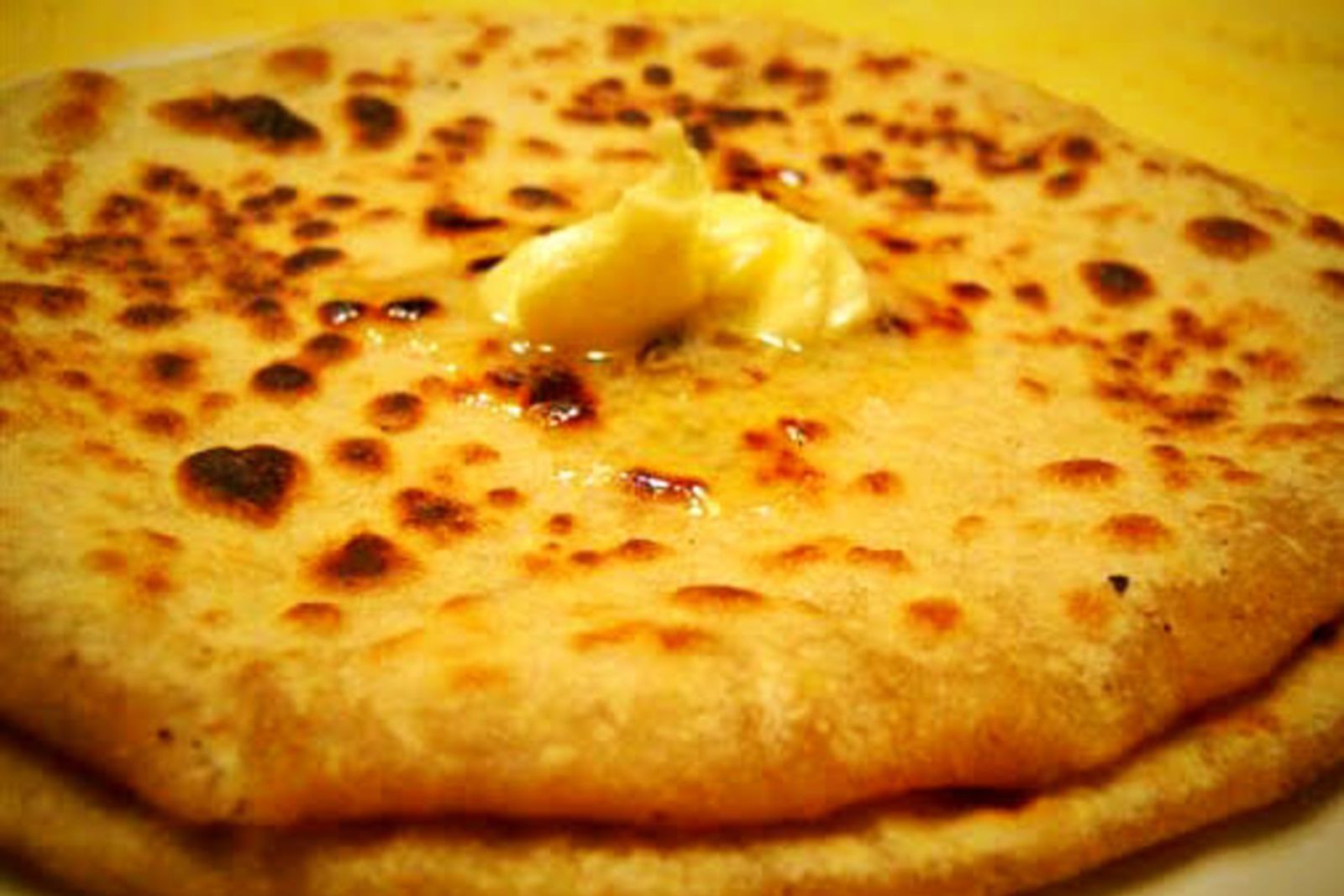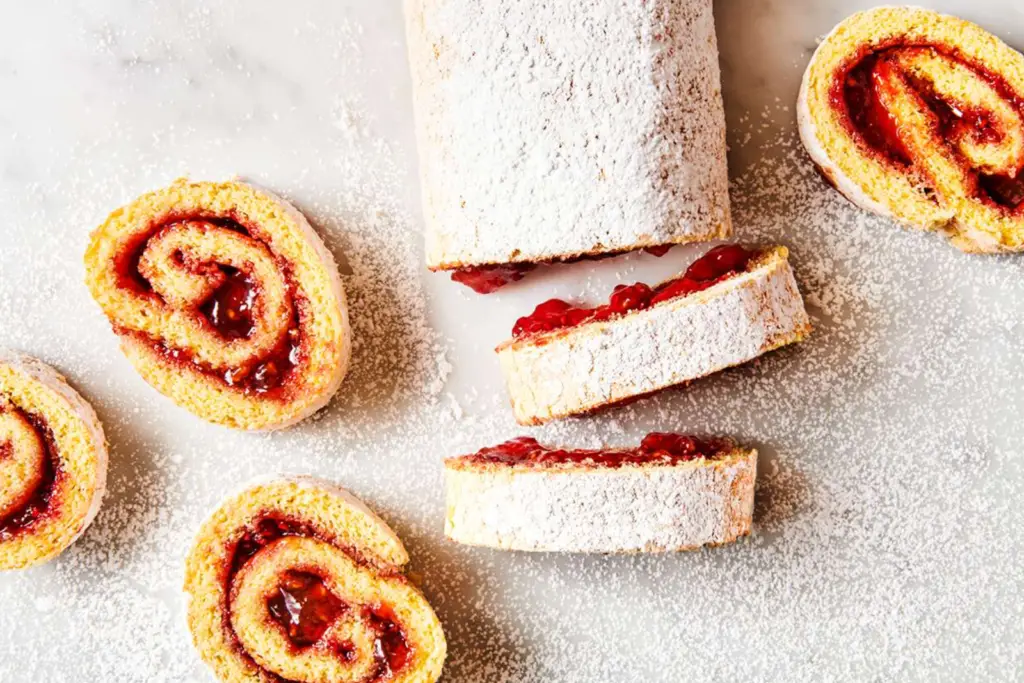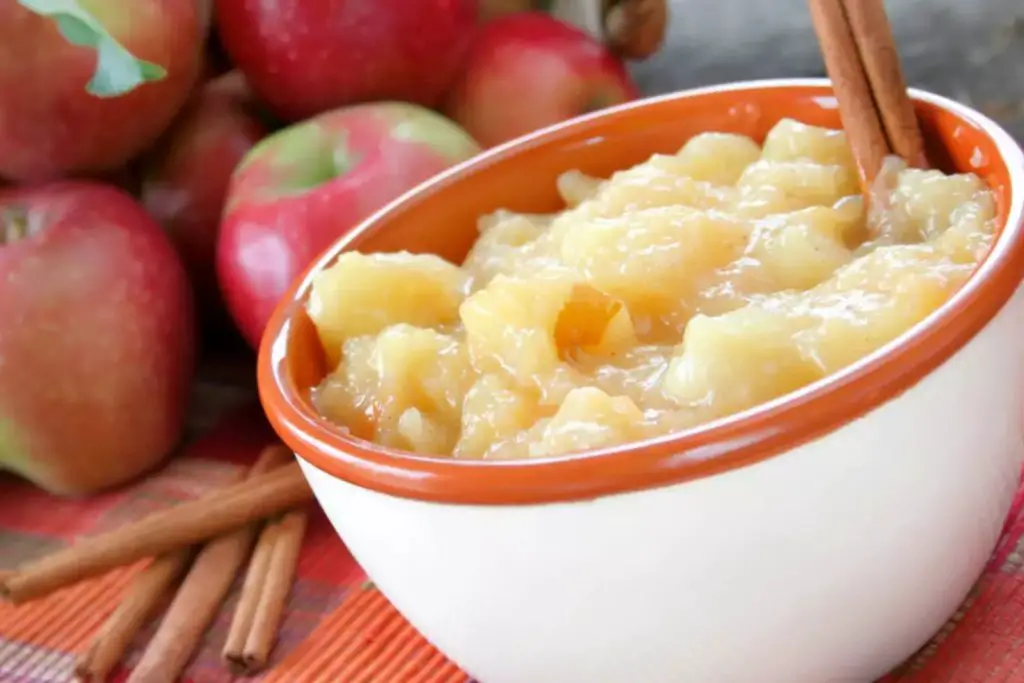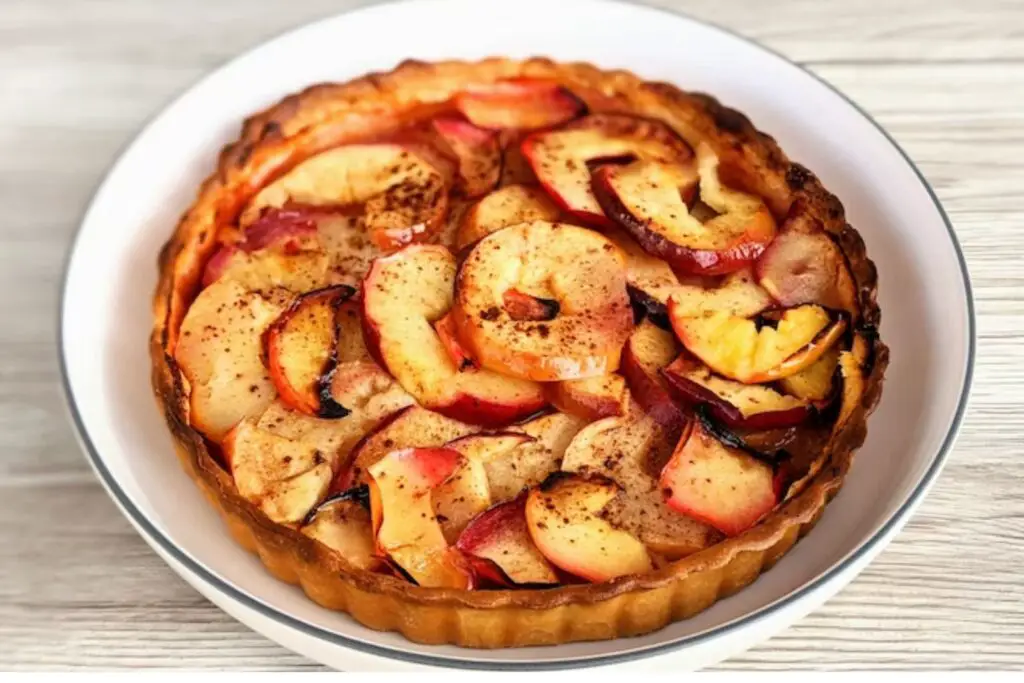
Aloo Paratha is a popular Indian flatbread that is stuffed with a spiced mixture of mashed potatoes. It’s a beloved dish that’s both flavorful and filling, often enjoyed with yogurt, pickles, or chutney. While Aloo Parathas are best when freshly made, there are times when you might want to enjoy them later, whether due to a surplus of parathas or simply for the convenience of having a quick meal on hand. Freezing Aloo Parathas is an excellent way to preserve their taste and quality for future consumption. This article presents a step-by-step guide to help you freeze Aloo Parathas while ensuring they remain just as delectable after freezing.
Here are the simple steps to freeze aloo paratha:
Step 1: Allow Them to Cool
After the Aloo Parathas have been freshly cooked to perfection, it’s essential to exercise patience and allow them to cool down to room temperature before proceeding with the freezing process. This seemingly simple step plays a crucial role in maintaining the quality and texture of the parathas during their time in the freezer.
When Aloo Parathas are hot, they emit steam due to the moisture content within the potato filling and the dough. Placing hot parathas directly in the freezer can lead to the formation of excess condensation within the packaging as the steam cools and turns back into water. This trapped moisture can be detrimental to the texture of the parathas once they are thawed and reheated.
By giving the Aloo Parathas ample time to cool down, you allow the excess steam to dissipate into the surrounding air. This gradual cooling process helps reduce the overall moisture content within the parathas themselves, minimizing the risk of excess condensation forming when they are frozen.
Preventing excess condensation is crucial because it can lead to sogginess in the Aloo Parathas. Soggy parathas not only have an unappetizing texture but can also negatively impact their taste and overall eating experience. The excess moisture can cause the dough to become soft and lose its desirable crispiness, and the filling might become mushy, affecting the distinct flavors and aromas of the spices and potatoes.
Should I partially cook the Aloo Parathas before freezing?
Fully cook Aloo Parathas before freezing for best quality. Partial cooking can result in uneven texture after thawing. Freezing fully cooked parathas maintains taste and texture effectively.
Step 2: Arrange on a Tray
After allowing the freshly cooked Aloo Parathas to cool down to room temperature, the next crucial step in the freezing process involves arranging them on a tray or baking sheet in a single layer. It might seem like a minor detail, but this step serves an essential purpose in preserving the individual integrity of each paratha and ensuring they remain separate during the freezing process.
When Aloo Parathas are placed directly on top of one another, especially while they are still warm, there’s a higher likelihood of them sticking together as they cool down further and eventually freeze. This sticking phenomenon can lead to a range of issues when it comes time to retrieve and thaw the parathas for consumption.
By placing the cooled Aloo Parathas on a tray or baking sheet in a single layer, you’re effectively creating a space between each paratha. This space is essential because it prevents any direct contact between the parathas, reducing the chances of them fusing together due to moisture or pressure. The parathas will cool down further while maintaining their individual shapes and textures, ensuring that they are ready for the next step in the freezing process.
Furthermore, arranging the parathas in a single layer provides optimal exposure to the cold air in the freezer. This exposure aids in the pre-freezing or flash-freezing process, where the parathas are rapidly cooled down. Rapid freezing helps to preserve the cellular structure of the parathas and prevents the formation of large ice crystals, which can compromise the texture and taste of the parathas when they are thawed and reheated.
Step 3: Pre-Freeze
Once you’ve arranged the cooled Aloo Parathas on a tray or baking sheet in a single layer, the next crucial step in the freezing process is pre-freezing. This step, often referred to as flash-freezing, involves placing the tray of parathas in the freezer for a few hours. While it might sound technical, this straightforward technique plays a pivotal role in ensuring that each Aloo Paratha retains its distinct shape, texture, and individuality, even when stored together.
During the pre-freezing process, the parathas are exposed to the extremely cold temperature of the freezer. This rapid cooling has several important benefits:
- Preservation of Texture: Aloo Parathas consist of a delicate balance between the crispness of the outer layer and the softness of the potato filling. Rapid freezing helps to lock in this texture by forming small ice crystals throughout the parathas. These small crystals are less likely to damage the cellular structure of the dough and filling, preserving the overall integrity of the parathas’ texture.
- Individuality: Placing the parathas in the freezer for pre-freezing ensures that they freeze individually before they are stored together in containers or bags. This prevents the parathas from sticking to each other during the freezing process, which can be a common issue if they are placed directly in a container without pre-freezing.
- Prevention of Clumping: Clumping can occur when warm or moist surfaces come into contact during freezing, causing them to freeze together. Pre-freezing minimizes this risk, as the parathas have already cooled down significantly before being placed close to each other in storage containers.
- Maintaining Flavors: Rapid freezing helps to preserve the flavors and aromas of the Aloo Parathas. By minimizing the time it takes for the parathas to freeze, the natural oils and spices within the parathas are retained, contributing to a better eating experience when they are later thawed and reheated.
The duration of pre-freezing typically ranges from a few hours to overnight, depending on the thickness and size of the parathas and the efficiency of your freezer. Once the parathas are pre-frozen, they are ready for the next step in the freezing process, which involves packaging them for long-term storage.
Step 4: Package for Freezing
After the Aloo Parathas have undergone the pre-freezing process on the tray in the freezer, it’s time to take the next step: packaging them for long-term storage. This step involves individually wrapping each paratha with either plastic wrap or parchment paper. While it may seem like an added effort, this extra layer of protection is essential in maintaining the quality, taste, and texture of the parathas during their time in the freezer.
- Partial Freezing: The reason for waiting until the parathas are partially frozen before packaging is to ensure that they are firm enough to handle without being completely solid. Partial freezing makes it easier to wrap each paratha without causing deformation or damage to their shape.
- Prevention of Freezer Burn: Freezer burn occurs when moisture within the food turns into ice crystals and then sublimates directly into the air, leaving the food’s surface dehydrated. This results in a dry, discolored appearance and can negatively impact the taste and texture of the parathas. By individually wrapping each paratha, you create a barrier that helps prevent direct contact with the cold, dry air in the freezer, reducing the likelihood of freezer burn.
- Maintaining Taste and Texture: Aloo Parathas have a delicate balance of textures—the crispness of the outer layer and the softness of the potato filling. Wrapping them individually helps preserve these textures by minimizing the exposure to freezer air. This protective layer of wrapping also prevents moisture from escaping the parathas, keeping them moist and flavorful when they are eventually thawed and reheated.
- Ease of Use: Individually wrapped parathas are more convenient to store and use. You can stack them neatly in a container or resealable plastic bag, taking up less space in the freezer. Plus, when you’re ready to enjoy them, you can easily retrieve the desired number of parathas without having to thaw the entire batch.
When wrapping the parathas, you can use either plastic wrap or parchment paper. Plastic wrap provides an airtight seal, while parchment paper is a more eco-friendly option and allows for breathability. Wrap each paratha securely, ensuring that the wrap is tight enough to prevent air from getting in.
Step 5: Seal and Label
After individually wrapping the Aloo Parathas with plastic wrap or parchment paper, the next important step in the freezing process is to seal and label them before placing them in a resealable plastic bag or an airtight container. This step involves a few key actions that contribute to maintaining the quality and organization of your frozen parathas.
- Protection Against Freezer Burn: Placing the individually wrapped parathas in a resealable plastic bag or an airtight container adds an additional layer of protection against freezer burn. Freezer burn occurs when moisture is lost from the surface of the food due to exposure to dry freezer air. By sealing the parathas in airtight packaging, you minimize the risk of freezer burn and help preserve their taste and texture.
- Excess Air Removal: Before sealing the bag or container, it’s essential to remove as much excess air as possible from the packaging. Air contains moisture that can lead to freezer burn and can also cause ice crystals to form on the surface of the parathas. Squeezing out the air ensures that the parathas remain in a controlled and dry environment, reducing the chances of deterioration.
- Labeling for Freshness: Don’t forget to label the package with the date on which you’re freezing the Aloo Parathas. This simple step is crucial for keeping track of their freshness. Over time, frozen foods can lose their quality, and labeling allows you to monitor how long the parathas have been in the freezer. You can use adhesive labels, tape, or even a permanent marker to write the freezing date on the package.
- Organization and Convenience: Placing the wrapped parathas in a bag or container helps keep them organized in the freezer. It prevents individual parathas from getting lost or dislodged in the freezer’s depths. Additionally, having them neatly packed makes it easier to retrieve only the number of parathas you need without disrupting the rest of the batch.
- Preventing Cross-Contamination: Airtight packaging also minimizes the risk of cross-contamination with other foods in the freezer. It prevents the transfer of odors and flavors between different foods, ensuring that your Aloo Parathas retain their authentic taste.
Step 6: Final Freeze
Once you have meticulously sealed and labeled the individually wrapped Aloo Parathas in resealable plastic bags or airtight containers, the next significant step is the final freeze. This step involves returning the packaged parathas to the freezer for long-term storage. However, there are a few key considerations to keep in mind to ensure that the parathas stay in optimal condition until you’re ready to enjoy them.
- Stable Temperature Environment: The temperature inside your freezer should be constant and maintained at a sufficiently low level to keep the parathas frozen. Fluctuations in temperature can lead to changes in texture, moisture, and overall quality of frozen foods. Make sure your freezer is set to an appropriate temperature for optimal food preservation, typically around 0°F (-18°C) or lower.
- Avoid Overcrowding: When placing the packaged Aloo Parathas back into the freezer, be mindful of not overcrowding the space. Proper air circulation within the freezer is essential for maintaining a consistent temperature. If the freezer is overly packed, it can lead to uneven cooling and freezing, potentially affecting the quality of the parathas.
- Positioning: Store the packaged parathas in a way that prevents them from being crushed or squeezed by heavier items. Placing them in a flat orientation or standing them up vertically in a container can help maintain their shape and integrity during freezing.
- FIFO Principle: If you plan to freeze multiple batches of Aloo Parathas over time, remember to follow the “first in, first out” (FIFO) principle. This means placing the newest batch at the back of the freezer and using the older ones first. This way, you’re consuming the oldest parathas first, ensuring that nothing goes to waste due to prolonged storage.
- Long-Term Storage: While frozen foods can be stored for several months without significant loss of quality, it’s generally recommended to consume frozen Aloo Parathas within 2 to 3 months for the best taste and texture. Regularly rotating and using your frozen stock ensures that you’re enjoying the parathas at their prime.
Step 7: Thaw and Reheat
After successfully freezing your Aloo Parathas and preserving their taste and texture, the time will come when you’re ready to enjoy them. Thawing and reheating frozen parathas is a straightforward process that requires a bit of patience and attention to detail to ensure that they are as delicious as when they were first made.
Thawing:
When you’re ready to enjoy your frozen Aloo Parathas, start by removing the desired number of parathas from the freezer. Thawing is a gradual process that helps the parathas regain their original texture and taste without compromising their quality.
- Refrigerator Thawing: The best way to thaw frozen Aloo Parathas is by placing them in the refrigerator. Place the packaged parathas on a plate or in a container to catch any condensation. Allow them to thaw in the refrigerator for a few hours or overnight. This slow thawing method prevents the parathas from becoming soggy and helps retain their original texture.
- Room Temperature Thawing: If you’re short on time, you can opt for room temperature thawing. Remove the desired number of parathas from their packaging and let them sit at room temperature for about an hour. This method is quicker than refrigerator thawing but still allows the parathas to thaw evenly.
Reheating:
Once the Aloo Parathas are thawed, it’s time to reheat them to recapture their wonderful flavors and textures. Reheating brings back the satisfying crispness of the outer layer and the warmth of the potato filling.
- Skillet Reheating: To reheat the parathas, use a skillet or a non-stick pan. Preheat the skillet over medium heat and add a touch of oil, ghee, or butter. Place the thawed paratha on the skillet and cook for a couple of minutes on each side. The oil or ghee helps create a crispy exterior and enhances the flavors. Flip the paratha occasionally to ensure even reheating.
- Microwave Reheating: If you’re looking for a quicker option, you can also use a microwave. Wrap the thawed paratha in a damp paper towel to prevent it from drying out. Microwave for 20-30 seconds on medium power, checking for desired warmth. Be cautious not to overheat, as this can lead to uneven texture and toughness.
Other related questions
Can I refreeze Aloo Parathas?
Yes, you can refreeze Aloo Parathas, but it’s best to avoid multiple cycles as it can affect taste and texture. Refreeze only if they’ve been thawed in the refrigerator. Consume within recommended timeframes for optimal quality.
How do I know if the Aloo Parathas have gone bad after being frozen?
Check for signs of freezer burn: dry, discolored patches on the parathas. Off-putting odors or unusual textures indicate spoilage. If unsure, err on the side of caution and discard.
Can I add oil or ghee to the parathas before freezing?
It’s recommended to avoid adding oil or ghee before freezing Aloo Parathas. Adding fats before freezing can alter texture. Add oil or ghee during reheating for optimal crispness and flavor.
Are there any gluten-free or vegan variations of frozen Aloo Parathas?
Yes, gluten-free Aloo Parathas can be made using alternative flours like chickpea or rice flour. For vegan versions, substitute dairy with plant-based options. Adapt recipes before freezing for dietary preferences.








